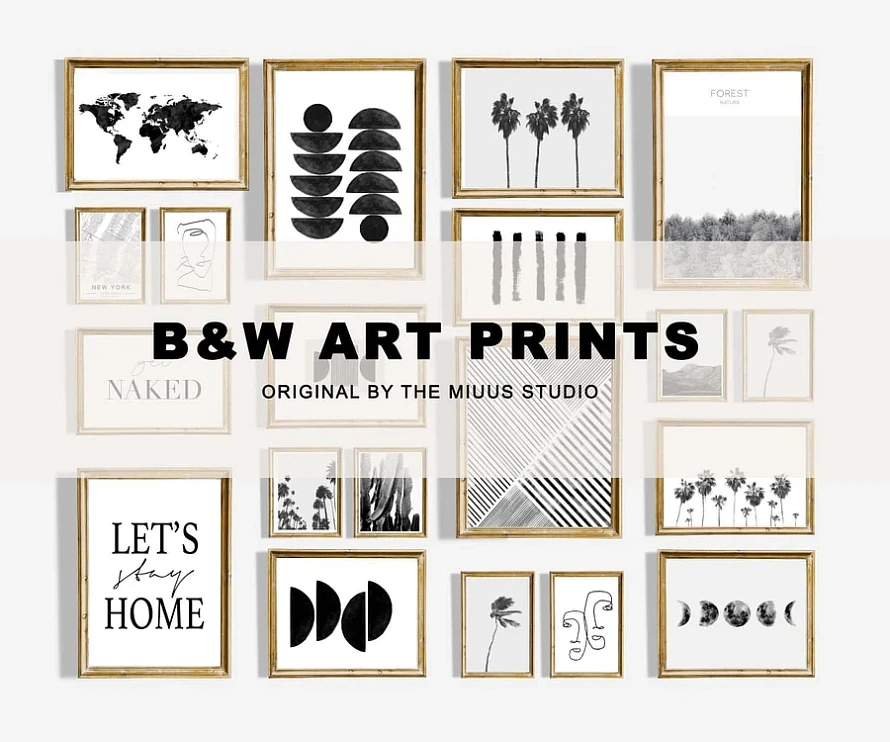Wall Art: Transforming Spaces with Creativity and Expression | A Comprehensive Guide
"Discover the importance of wall art in interior design. Learn about its types, how to choose it, and its benefits for homes and workplaces. A comprehensive guide to decorating your walls with art."
The Importance of Wall Art in Our Lives
Wall art is more than just a decorative element; it reflects our culture, history, and values. Here are some reasons why wall art is an essential part of our lives:
-
Self-Expression: Wall art allows individuals to express their personalities and interests. Whether you prefer classic or modern works, the art you choose reflects your unique taste.
-
Creating Comfortable Atmospheres: Wall art can change the energy of a room. For example, calm paintings promote relaxation, while colorful pieces bring positive energy.
-
Boosting Creativity: In workspaces like offices or studios, wall art can stimulate creativity and increase productivity.
-
Connecting Cultures: Wall art reflects different cultures, allowing us to learn about the traditions and arts of other peoples.
-
Increasing Space Value: In real estate, wall art can enhance the appeal and market value of a property.
Types of Wall Art
Wall art is incredibly diverse and includes many forms and styles. Here are some of the main types:
-
Classic Paintings: Includes oil paintings, watercolors, and acrylics. These often depict natural scenes, portraits, or historical events.
-
Photography: Photographs capture moments in time, from stunning landscapes to everyday life. They can be in black and white or color.
-
Prints and Posters: These are often reproductions of famous paintings or modern designs. They are an affordable and easy-to-change option.
-
Textile Art: Includes tapestries, wall rugs, and fabric artworks. These add texture and warmth to a space.
-
Wall Sculptures: Includes metal, wood, or other material sculptures. These add a three-dimensional element to walls.
-
Murals: Large-scale artworks that cover an entire wall. Often used in public spaces but can also make a stunning addition to homes.
-
Digital Art: With technological advancements, digital art has become more popular. It can be displayed on screens or printed on canvases.
-
Interactive Art: Includes works that change with viewer interaction, such as pieces that respond to movement or light.
How to Choose the Right Wall Art
Choosing wall art requires considering several factors to ensure the piece fits the space and meets your needs. Here are some tips:
-
Determine the Room’s Purpose: Think about how the space will be used. For example, calm works are ideal for bedrooms, while vibrant pieces suit living rooms.
-
Choose the Right Style: Ensure the art complements the room’s overall design. For example, modern rooms suit abstract art, while traditional spaces benefit from classic paintings.
-
Consider Size: The artwork’s size should be proportional to the wall and surrounding furniture. A large piece can be a focal point, while smaller works can be grouped into a gallery wall.
-
Pay Attention to Colors: Choose colors that harmonize with the room’s palette or provide a bold contrast.
-
Think About Lighting: Proper lighting can enhance the impact of wall art. Use spotlights or picture lights to highlight your favorite pieces.
-
Choose What You Love: Ultimately, select art that makes you happy and resonates with your personality.
Benefits of Wall Art in Different Spaces
Wall art can have a positive impact in various environments. Here’s how it can enhance some spaces:
-
Living Rooms: Wall art can make a living room more welcoming and elegant. A gallery wall or a large painting can serve as a focal point.
-
Bedrooms: In bedrooms, wall art can promote relaxation. Choose calm and soothing works.
-
Offices: In offices, art can stimulate creativity and increase productivity. Inspirational or abstract pieces are great choices.
-
Restaurants and Cafes: In public spaces, wall art can enhance the ambiance and attract customers.
-
Outdoor Spaces: Wall art isn’t limited to indoors. It can be used in gardens or on exterior walls to add an artistic touch.
The Future of Wall Art
As technology evolves, the world of wall art is also changing. Here are some trends shaping its future:
-
Digital Art: With technological advancements, digital art is becoming more popular. It can be displayed on screens or integrated with virtual reality.
-
Interactive Art: Works that change with viewer interaction, such as pieces that respond to movement or sound, will become more widespread.
-
Sustainable Art: With growing environmental awareness, there will be greater demand for art made from eco-friendly materials.
-
Customization: Personalized art will become more common, with people commissioning unique pieces that reflect their personalities.
-
Large-Scale Murals: Large murals will continue to be a major trend, especially in public spaces.
How to Incorporate Wall Art into Your Home
If you want to add wall art to your home, here are some practical steps:
-
Start with One Piece: Choose a large artwork to serve as a focal point in the room.
-
Create a Gallery Wall: Group several smaller pieces together to create a gallery wall.
-
Experiment with Textile Art: Add texture to your walls with tapestries or wall rugs.
-
Use Digital Art: If you want something modern, try digital art that can be easily changed.
-
Don’t Be Afraid to Experiment: Wall art is about personal expression, so don’t hesitate to try new things.
Conclusion
Wall art is more than just decoration; it’s a powerful tool for self-expression, transforming spaces, and creating comfortable or inspiring atmospheres. Whether you prefer classic paintings, photography, or digital art, there’s a world of possibilities to explore. By choosing art that reflects your personality and suits your space, you can turn your walls into canvases that express who you are and inspire everyone who sees them.


